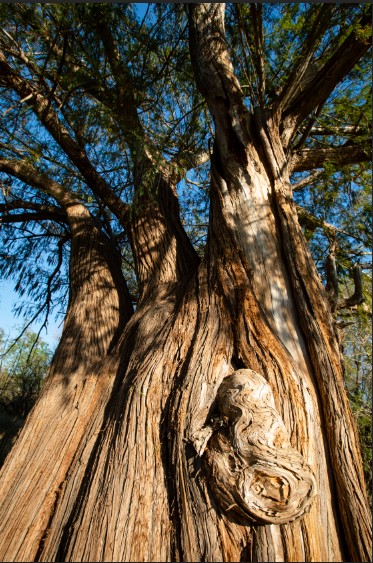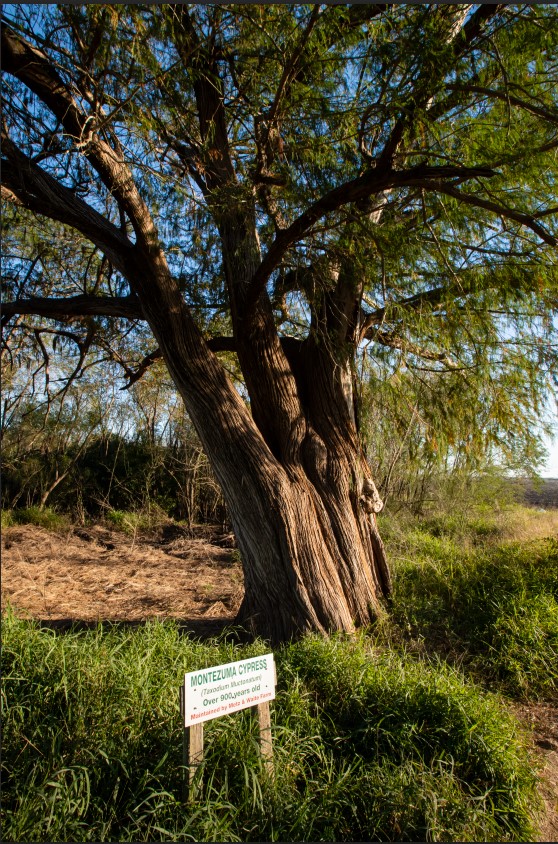Montezuma Cypress Tree

This is a 900-year-old Montezuma Cypress tree located on the flood-plain of the Rio Grande in Abram, Texas. Its age is estimated based on the maximum girth of its trunk, which at 5.2 feet above ground, measures 22 feet in circumference.
Montezuma Cypress trees were named after the Aztec ruler and are native to deep south Texas and northern Mexico. It is the national tree of Mexico. Both banks of the Rio Grande used to be lined with similar massive cypress trees, but most were cut down for wharf building in the port of Brownsville, other construction projects, or as fuel for steamboats.
Montezuma cypresses require a lot of water, so much so that the Aztecs named the species ahuehue, or “old man on the water.” Its seeds will only germinate in water or in water-saturated soils. When this tree sprouted from a seed approximately 900 years ago, it was near the river channel; however, today, the tree is in the middle of a dry agricultural field approximately one mile from the Rio Grande. The tree became isolated from the riverbank as a result of the natural lateral migrations of the meandering channel of the river.

Ubicado en una llanura aluvial del Rio Grande en Abram, Texas, se calcula la edad de este espécimen a partir de la circunferencia de su tronco, que a 175 centímetros sobre el suelo alcanza un perímetro de más de seis metros y medio. El ahuehuete, también llamado «sabino» o «ciprés de Moctezuma» en honor del emperador azteca, es nativo de las regiones más meridionales del Sur de Texas y del Norte de México, y es también el árbol nacional de este país. Ambas márgenes del Río Grande estaban pobladas por cipreses similares de gran tamaño, si bien la mayoría fueron talados para la construcción de los diques del puerto de Brownsville, así como para otras construcciones y como combustible para los barcos de vapor.
Estos árboles necesitan grandes cantidades de agua, hasta el punto de que los aztecas les dieron el nombre de ahuehuetl, que quiere decir «el viejo del agua». Sus semillas solo germinan en el agua o en suelos sobresaturados y, cuando este ejemplar brotó de su semilla hace unos 900 años estaba ubicado en el lecho del río. En la actualidad, no obstante, se erige en medio de unos campos de cultivo de secano a aproximadamente una milla del Río Grande, de donde el árbol quedó separado como resultado natural de los desplazamientos laterales de los meandros del río.
Listen to the podcast in English - the Montezuma Cypress Tree
Escucha en Espanol - Cipres de Montezuma
